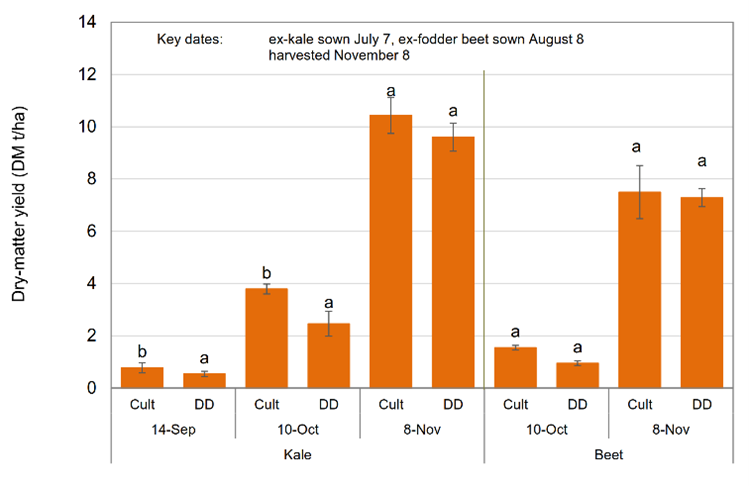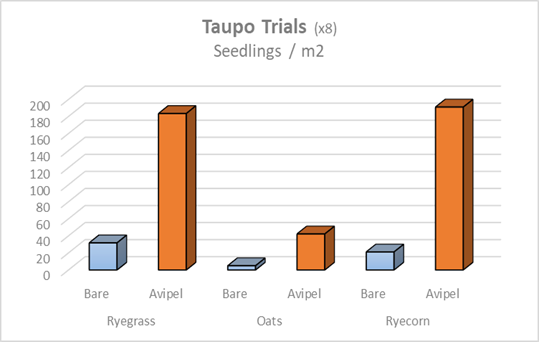THIS PROMOTIONAL FEATURE WAS PROVIDED BY BALLANCE AGRI-NUTRIENTS
Catch crops, also commonly referred to as cover crops, are nothing new. Already used extensively in cropping, they are traditionally sown in autumn to provide feed over winter for stock, conserve nutrients and reduce weeds, water runoff and soil erosion.
Livestock grazing on forage crops in winter, can damage soil and deposit large quantities of urine nitrogen (N) onto bare soil at a time when greater rainfall likely means more N leaching and soil loss. Recently there have been a number of Sustainable Farming Fund projects researching sowing catch/cover crops in winter, directly after forage grazing, to assess how much feed is grown and how much N loss is prevented. Different species and establishment techniques, including broadcasting, have been evaluated.
Promising results to date
Results of trials carried out on mid-Canterbury and Southland dairy winter forage blocks, were promising. “The trials showed sowing a catch crop directly after winter forage grazing can reduce the amount of N at risk of leaching and significantly increase feed production, compared with leaving the soil fallow,” says Dr Peter Carey of Lincoln Agritech who was leading one of the projects.
To investigate establishment practices, oats were sown a month apart in two paddocks, and established by cultivation+drilling or simply direct drilling. Four months later, the first crop, sown in early July on a grazed kale paddock, was hitting 10 T DM/ha. The ex-fodder beet paddock was sown a month later and yielded approximately 7.5 T oat DM/ha, (See Figure 1). In both paddocks, there was no significant difference in yield between the cultivated+drilled oats and the direct drilled oats. However cultivation comes with higher costs and greater risk of soil loss.
At another site in Canterbury, three different species of catch crops (forage oats, triticale and Italian ryegrass) were compared. All were cultivated+drilled and four months later when harvested as silage, the oats had outperformed the other crops, with more than 12 T DM/ha. The triticale was not far behind with 10 T DM/ha and Italian ryegrass had 6 T DM/ha. Once N content of the forage crop is known, it is an easy calculation to work out how much nitrogen was retained on the farm. Depending on sowing date and hence yield, between 100 to 200 kg N/ha could be captured by the catch crop.
Broadcasting seed trials with Avipel bird repellent
Recognising that cultivating soil in winter is a risky business, not only for the tractor & operator, but also through enhancing the risk of soil erosion, another series of trials were conducted near Taupo and in Southland to evaluate broadcast seed options. The Helicropping – Protecting our soils project was funded by MPI, Ballance Agri-Nutrients, Beef+Lamb, Agricom, Nufarm and PGGWrightson Seeds.
This project demonstrated that cover/catch crops can be established by surface broadcasting seed soon after grazing the winter forage crop. However establishment was effective only if the seeds had been treated with Avipel bird repellent. Annual ryegrass and ryecorn gave best plant count results. Oat results were poor because birds worked out how to open the Avipel treated husk and consume the untreated seed. Avipel treated Ryecorn seed (not having a husk) and ryegrass were left untouched by birds. (See figure 2). Seed from ‘huskless oats’ and triticale, treated with Avipel would likely result in both superior yield and palatability over ryecorn.
Catch/cover crops can provide farmers with both financial and environmental wins, within the order of 150 kg of N per hectare captured, while offering a useful forage in late spring, along with soil protection.
Farmers can use cover crops now to protect their soil and to retain nitrogen, and it is expected that over time data from these trials will be incorporated into an Overseer update, so that farmers using catch crops in their winter forage systems also get credit for their N loss reduction.

Figure 1. Harvest DM yield for ex-kale and ex-fodder beet tillage trials (Cult = cultivation and DD = direct drill).

Figure 2. Establishment seedling counts from June broadcast Avipel treated and untreated seed.
For more information talk to your Ballance Agri-Nutrients Nutrient Specialist or to your local Ruralco Representative.
Image above: Cover/Catch crop in Southland: Avipel treated annual ryegrass at Southern Dairy Hub Invercargill. Surface broadcast sown 24th July 2021 after grazing brassica crop. Photo taken 14 weeks later on 1st November.